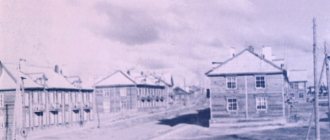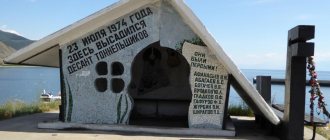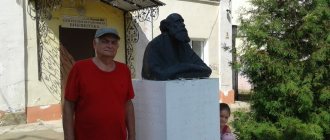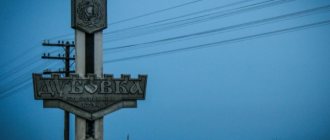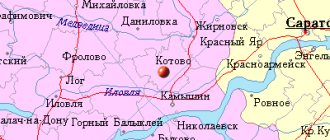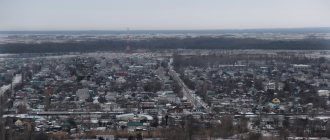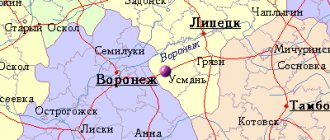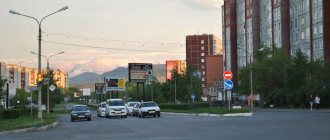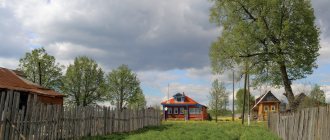If fate, for reasons known to itself, ever leads you to the city of Orlov, the sights are unlikely to line up to please you. It may even seem to you that there is nothing to see there at all. The tiny town with wooden buildings can boast only a population of seven thousand and a local history museum. However, everything in the world has its own history. Having learned more about this settlement, you may not be so categorical and on the way (for example, to Kirov) you will also look into the city of Orlov, the sights of which are modest, but also worthy of attention.
A little history
Orlov is a small regional center in the Kirov region. The official date of its foundation is considered to be the first mention in the chronicle in 1459. During the war between the Galician and Moscow principalities, the city was captured by the troops of Tsar Vasily II. In 2014, the settlement celebrates its 555th anniversary. However, there is no doubt that people lived in this territory long before the 15th century. Today, historians believe that the first settlement in this place arose in the 12th-13th centuries, and its inhabitants were immigrants from the Novgorod lands.
Population[ | ]
| ↘3300 | ↗3700 | ↗4600 | ↗7300 | ↗9151 | ↗10 556 | ↗10 751 | ↘10 296 | ↗10 400 | ↗10 600 | |
| 1998[13] | 2000[13] | 2001[13] | 2002[14] | 2003[13] | 2005[13] | 2006[13] | 2007[13] | 2008[15] | 2009[16] | 2010[17] |
| ↘10 500 | ↘10 200 | ↘10 100 | ↘8596 | ↗8600 | ↘8400 | ↘8100 | ↘7900 | ↘7700 | ↘7654 | ↘6959 |
| 2011[13] | 2012[18] | 2013[19] | 2014[20] | 2015[21] | 2016[22] | 2017[23] | 2018[24] | 2019[25] | 2020[26] | 2021[1] |
| ↗7000 | ↘6968 | ↗6976 | ↗6990 | ↘6910 | ↘6834 | ↘6709 | ↘6607 | ↘6557 | ↘6433 | ↘6335 |
As of January 1, 2022, in terms of population, the city was in 1033rd place out of 1116[27]cities of the Russian Federation[28].
A little geography
Like most cities of antiquity, Orlov was founded in a convenient location - on a cape, at the confluence of two rivers - Vyatka and Plyushchikha. On two sides it was protected by natural water barriers, and on the third by a deep ditch, also filled with water. Oryol settlement is one of the oldest in the region. In the middle of the last century, archaeological excavations were carried out here. Today, on the site of the triangular settlement, you will see only mounds and holes. And only a rich imagination will help you imagine how the ancestors grew rye, barley, oats and peas here, fished, hunted and fought using darts and arrows.
Culture[ | ]
Chess is a unique tourist brand of the city of Orlov, since it is here that the famous Orlov chess and backgammon are produced. Therefore, since 2012, the regional festival “Oryol Rook” began to be held here, the culmination of which is the game of “live” pieces on a huge chess field. The players' tournament brings together not only chess lovers, but also checkers and backgammon players. The festival includes a chess king and queen ball, competitions, exhibitions of handicrafts, and performances by creative groups[29].
Where is the city of Orlov located?
The map will tell us that it is located 70 kilometers from the regional Kirov, on the right bank of the Vyatka. Kotelnich, Murashi and Sovetsk (formerly Kukarka, birthplace of Vyacheslav Mikhailovich Molotov) are also located nearby. By the way, Orlov himself changed the name twice throughout history. From 1923 to 1992, it was called Khalturin - in honor of the handsome revolutionary Stepan Khalturin, who in 1880 managed to smuggle 30 tons of dynamite into the basement of the Winter Palace and set off an explosion that killed 11 people. Emperor Alexander II, against whom the terrorist act was planned, by a fortunate coincidence, remained alive. Khalturin was born three kilometers from Orlov, in the village of Khalevinskaya.
Pedigree of the small homeland
Founded in 1459. From 1923 to 1992 it was called Khalturin; in 1992 the city returned its previous name. The center of the district of the same name. Located in the center of the region on the right bank of the Vyatka River, approximately 87 kilometers below the city of Kirov. The Kirov-Nizhny Novgorod highway passes through the city, the distance to Kirov is 78 kilometers, to the nearest railway station Kotelnich is 46 kilometers. Population - 10.4 thousand people (1993).
The city of Orlov is one of the ancient cities of Russia. It was first mentioned under this name in the chronicle of 1459 in connection with the campaign of the troops of Grand Duke Vasily II under the leadership of governors Ivan Patrikeev and Dmitry Ryapolovsky to seize the Vyatka lands and annex them to the Moscow state. In the same year, the Moscow army took Kotelnich and Orlov by storm, approached Khlynov and besieged it.
On the site of the modern city of Orlov, the population appeared at the turn of the 12th - 13th centuries. At this time, future settlers from the Novgorod land penetrated into the Vyatka basin area along the Volga, Unzha, Vetluga and along the Northern Dvina, South, Moloma from the Vladimir-Suzdal principality. Both streams of settlers populated the banks of the Vyatka, built settlements and villages. Some of the settlements - the so-called settlements - were fortified with earthen ramparts and wooden walls for protection from armed detachments and to protect the population and livestock from predatory animals. Among the first to emerge on Vyatka land was the Oryol settlement, which had the shape of a triangle. On one side it was limited by a steep river bank, on the other two by deep ditches filled with water. The bulk of the first settlers were peasants (smerds). They were engaged in farming, cattle breeding, hunting, and fishing.
The first archaeological excavations of the settlement were carried out in 1960. Numerous burials were opened, where skeletons rested in wooden coffins, as well as the remains of burnt wooden structures, several residential buildings, inside of which traces of stoves, wooden floors, household and household equipment were preserved. In the burnt buildings, grains of rye, barley, oats and peas, fragments of pink salmon, animal and fish bones, fishing hooks and sinkers were found.
Many people are interested in the question: where did the name Orlov come from? Of course, the majestic bird has nothing to do with it, just like Count Orlov. The famous Kirov historian Professor A.V. Emmaussky is inclined to believe that the name of the city was brought by Russian settlers who arrived from the Dvina land, where in ancient times there was a city of Orlovets. In one of the printed sources of the late 16th century in the Book of the Large Drawing, the Vyatka city of Orlov is mentioned under the name Orlovets. The famous Kirov toponymist D. M. Zakharov derives the name “Orlov” from landscape terms: rel, eagle, reel, orelka - “sharp cape, corner, ledge.” Orlov is indeed located on a cape formed by the Vyatka River and the Vorobyokha River.
The convenient location of the city made it one of the centers of trade in the Vyatka land back in the 18th century. Merchants from many cities of European Russia and Siberia came here. Every year in March and November, fairs were held in the city (Semyonovskaya, Alekseevskaya). The city of Orlov then turned into a noisy market. They traded carts, wheels, tarantasses, sleighs, chests, furniture, livestock, textiles, ready-made clothes, shoes, and food products. The development of trade was facilitated by roads built in the second half of the 18th century. One of them passed through Orlov, connecting Vyatka with Moscow. It is no coincidence that the main street of the city received the name Moskovskaya (now Lenin Street).
On September 11, 1780, as is known, the Vyatka governorate was formed, which included 13 districts, among which was Orlovsky with its center in the city of Orlov. In 1797, the viceroyalty was transformed into a province, the districts into counties, as a result of which the city of Orlov became a county town. On May 28, 1781, Empress Catherine II approved the coat of arms of the city of Orlov. At the top of the shield was the coat of arms of Vyatka, and at the bottom, in a silver field, was an eagle sitting by the river.
The city came slowly with people. In 1678, only 107 people lived here, in 1782 - 872, in 1882 - 2339, in 1905 - 2785. With the population growth, a handicraft industry gradually developed: the production of harmonicas, self-spinning wheels, and burl products arose. Merchants ruled the life of the city. They were also owners of industrial enterprises.
Pre-revolutionary Orlov was a typical district town of Tsarist Russia. During the autumn thaw, he drowned in the mud. There were no paved streets. The city was illuminated by kerosene lanterns. The water supply and 75-kilowatt power plant were opened only in 1914. Urban industry consisted of semi-handicraft enterprises.
The remoteness from the major centers of the country made, as already mentioned, the Vyatka region a place of exile. In the city of Orlov , N. E. Bauman, V. V. Vorovsky, F. I. Gurvich (Dan), A. N. Potresov, K. I. Zakharova, I. G. Smidovich, A. A. Kuznetsova and other.
The name of the Russian revolutionary worker of the 70s and 80s of the 19th century, S. N. Khalturin, is associated with the Vyatka region. In the city of Orlov, from 1868 to 1871, he studied at the district three-year school (Lenin Street, 62, secondary school building No. 2). In honor of the fighter against tsarism, by decree of the All-Russian Central Executive Committee in 1923, the city of Orlov was renamed Khalturin. On September 21, 1992, the city returned its original name.
In terms of development of education and culture, the city of Orlov was considered one of the best in the province. According to the circular of the Ministry of Public Education, it was envisaged to open a district school in each district, and a parish school in the church parish, and in 1819 the Vyatka governor invited the Oryol mayor M. Sintsov to consider the issue of creating a parish school in the city. Soon the governor was informed that the city society agreed to open it. The doors of the Oryol one-class parish school for boys opened on August 27, 1824. Initially, 46 people were accepted. The children were taught reading, writing, arithmetic, grammar, morality (rules for students) and the law of God. Seven years later, a district school was created on its basis, which on August 28, 1835 was transformed into a three-year school, on August 14, 1880 - into a city two-year school with a six-year period of study, and on January 1, 1913 into a higher elementary school. Initially it was located in four rooms of the City Duma. In 1838, construction began on a two-story stone building, which was purchased on November 10, 1841 to house a school for 2,285 rubles 71 kopecks (now the building of secondary school No. 2). Physics and natural history classrooms were equipped at the school, and a library was opened. During training, special attention was paid to developing beautiful calligraphic handwriting, the ability to calculate on an abacus, studying mathematics, and acquiring labor skills on a land plot.
On January 1, 1860, a parish school for boys was opened, which was supported by the church. On November 28, 1864, it was transformed into a parochial school. Later, a parochial school for girls also appeared. Each of these schools enrolled no more than 50 people.
In 1867, the zemstvo opened a one-class urban village school for boys with a three-year period of study, and in 1866 - a one-class school for girls, which was then transformed into a women's school of the 2nd category, from which a seven-year women's gymnasium subsequently grew (from August 1, 1901 it became eight years old). It trained teachers for primary rural schools. According to the design of V.V. Vorovsky, construction of a building for the gymnasium was carried out, which was completed in 1901. Admission to the gymnasium was based on the results of entrance exams. 66.8 percent of high school students came from peasant families.
On July 25, 1905, a real school was opened in Orlov, the director of which was an experienced teacher, state councilor, and graduate of St. Petersburg University N. I. Asatkin. The school was staffed with qualified teachers. Its graduates received solid and deep knowledge, which allowed them to successfully enter higher education institutions. The final exams required impeccable knowledge of the material and knowledge of foreign languages. A graduate of the school, Professor I.F. Pechishchev recalls: “At the final exams in French and German, an unfamiliar text was read and immediately translated without a dictionary. Not a single mistake was made when writing the dictation. If there was even one mistake, the realist was not allowed to take the next exams.” A small proportion of those entering the first grade made it to the final exams. So, in 1905, 122 people entered, and in 1912 only 21 graduated.
According to the Regulations on the Unified Labor School of October 16, 1918, unified second-level labor schools No. 1 and No. 2 were created on the basis of a real school and a girls’ gymnasium. The first of them, from September 1933, became a ten-year training period. It has a long and glorious history. In 1965, it was named after Hero of the Soviet Union N. F. Zonov.
The pride of the school is its graduates, among whom, in addition to N. F. Zonov, are Heroes of the Soviet Union V. Z. Gridin, I. I. Krutikov, V. S. Matveev, N. A. Naumov, A. P. Petrov, Hero Socialist Labor K.P. Trapeznikov, five laureates of the USSR State Prize, 14 doctors of science, more than 70 candidates of science, more than 20 honored teachers, doctors, artists, scientists.
In general, Orlov is a city that has always studied. If, say, we throw out a cry to the schools of the Kirov region: “Who graduated from the Khalturinsky Pedagogical School, respond!”, hundreds of teachers, young and old, starting and completing their teaching work, will respond. After all, over more than 50 years, more than 3 thousand primary school and physical education teachers have received his diplomas. Then, back in 1931, it was called a pedagogical college.
Since ancient times, the Vyatka province, which has significant territories occupied by swamps, has needed land reclamation specialists. On July 22, 1922, by decision of the board of the provincial department of public education, the Vyatka reclamation technical school was opened in the provincial center, which in 1935 was transferred to the city of Khalturin. The technical school had three departments: irrigation, land management and peat management. Even earlier, in 1930, the Vyatka Agricultural Technical School with departments of field cultivation and animal science was transferred from the city of Vyatka to the city of Khalturin.
In 1939, with the launch of the educational building, the irrigation technical school and the agricultural technical school were merged into the Khalturinsky Agricultural College with four departments: agronomic, zootechnical, irrigation and land management with a three-year training period. Currently, land managers, lawyers and accountants of agricultural production are trained here. There is probably not a single region or region in Russia where technical school graduates do not work. Its graduates were Hero of the Soviet Union S.V. Khramtsov, the already mentioned Hero of the Soviet Union V.Z. Gridin and Hero of Socialist Labor K.P. Trapeznikova, Honored Agronomist of the RSFSR A.A. Chauzov and many others. In 1992, the technical school was transformed into an agricultural college.
On September 26, 1945, the executive committee of the regional Council of People's Deputies issued a resolution “On the organization of a mechanization school in the city of Khalturin.” Such a school was opened, then it was transformed into mechanization school No. 15, and from May 1963 it became known as rural vocational school No. 6 (since July 1984 - No. 36). The school trains general-purpose tractor drivers, combine operators, car drivers, and land reclamation operators.
In January 1847, “A brief description of the opening of a public library in the city of Orlov on December 6, 1846” was published in the Vyatka Provincial Gazette. It says: “The idea of establishing a public library in the city of Orlov has long occupied the minds of well-meaning people. On March 18, 1846, city residents made voluntary donations and thereby gave the opportunity to the civilian superintendent of schools M. Pletkin to petition for the opening of a public library. On May 24, the Minister of Public Education authorized the opening of this treasury of public education in the city of Orlov. On December 6, 1846, city residents gathered in the Kazan-Bogoroditsky Cathedral. After the prayer service was served, they went to the apartment intended for the library while the bells were ringing. Here the local archpriest blessed the opening of the establishment.”
So a public library was opened in the city of Orlov. Its first readers were 45 people. The book fund initially consisted of 63 books. A great contribution to the development of the library was made by the city mayor, merchant of the first guild A. N. Kuznetsov, who was called “a friend of enlightenment.” Through his efforts, as well as the efforts of the City Duma, the book fund is growing, which in 1899 amounted to 13,539 books, which amounted to 3.6 books for each reader. For comparison, we note that in Simbirsk there were 0.72 books per reader, Astrakhan - 0.24, Chisinau - 0.12. The Oryol city library was considered one of the largest in Russia. After the Great October Socialist Revolution, the library received convenient premises. A reading room and a children's department were opened in it. Since 1938, the district and children's libraries have been opened.
Local historians and the district zemstvo came up with the idea of creating a local history museum in the city. It took a little over two years to organize it. On March 10, 1919, the Oryol People's Museum began work. It was located opposite the market square, “facing the village”, so people called it “peasant”. From the first days there was a large attendance. Thus, in 1926, the museum was visited by 46,012 people.
In 1952, the museum was closed, the most valuable exhibits and historical documents were transferred to the Kirov Regional Museum of Local Lore. For thirty-two years, the Khalturinsky district was without its own museum exhibition, and for at least the last ten, or even more years, admirers of their native land and public organizations have persistently demanded its creation. When the authorities came to a positive conclusion and gave permission, it took the restless enthusiast M.F. Dranishnikova only a year and a half to find the necessary materials, documents and things, and to design the museum’s exhibitions. The opening took place on September 25, 1984.
The museum has 4 halls. Here are antiques, photographs of the city of Orlov, weaving products, household items and utensils. There is an extensive collection of historical documents, front-line letters, orders, medals, order books, military badges, items of front-line clothing, front-line leaflets, award sheets, photographs of participants in the Great Patriotic War.
Theater life has been in full swing in the city of Orlov for a long time. The intelligentsia enthusiastically participated in amateur performances and concerts. The 200-seat auditorium of the People's House was always crowded during performances. Art lovers have produced a significant number of interesting productions. Musical and vocal evenings and concerts were held.
On the eve of the revolution, a professional director appeared in the city - artist of the Riga Theater A.K. Korotaev . He strengthened the staff of the amateur troupe, created a number of interesting performances, and then became the director of productions in a girls’ gymnasium and a real school. Many realists and high school students were part of the first troupe. Among them are N.V. Vaganov , A.S. Khodyrev (later became an Honored Artist of the RSFSR), E.I. Varzegova, A.L. Khokhlova, N.A. Krinitsyn and others.
The amateur theater revived its activity even more when in January 1919, the artist of the Moscow Maly Theater A. A. Cherkasov ; he became artistic director and director. Spectators eagerly attended the performances. An unprecedented event took place in the city: the play “Savva” by L. Andreev was performed for three days in a row. In it, Cherkasov played the role of an anarchist rebel. Later, the troupe successfully staged A. N. Ostrovsky’s “Our People—We Will Be Numbered.”
Soon it was possible to organize a choir and a string orchestra, and solo singers, reciters, and dancers appeared. But theater scene enthusiasts dispersed to different cities of the country. A. A. Cherkasov was sent to the Far East. There was a lull for a long time. And only after the end of the Great Patriotic War, an amateur drama club was created at the regional House of Culture, headed by professional artist V.P. Bolshakova. Under her leadership, two productions were prepared: “Vassa Zheleznova” by A. M. Gorky and “It’s not all Maslenitsa for the cat” by A. N. Ostrovsky.
In 1952, demobilized soldier G.N. Fokin and created a “strong” drama club from lovers of theatrical art. The circle members had to work in difficult conditions. Rehearsals were often held in the apartments of amateur artists. They played in a small hall, on a primitive stage.
The greatest success for the Khalturinites was brought to them by the production of the play “The Divorce Case is being Heard.” In March 1961, at the regional amateur art show, the group won first place, and in October of the same year, the group was awarded the honorary title of the People's Theater. In 1965, the Khalturin Theater became a laureate of the All-Russian Review of People's Theaters, and in 1973, the director of the people's theater G. N. Fokin was awarded the honorary title “Honored Worker of Culture of the RSFSR.”
A few words about the industry. At the beginning of the 20th century, in the city of Orlov there were 27 handicraft workshops, loudly called factories and factories by zemstvo statistics. Enterprises were small, based on hard manual labor. The largest were Bulychev's match factory, sawmill , and Zonov's and tanneries . They employed 104 people. The workshops produced bakery products, confectionery products, bread, and household goods. In the 20s and 30s, fishing cooperatives “Udarnik”, “Shveiprom”, “Kozhobuv”, “Sila”, and MUD were created.
The industry of the city of Orlov is mainly of local importance; This is the processing of wood and agricultural raw materials. The most significant enterprises are a cultural goods factory, a furniture factory, a forestry enterprise, a bakery plant, a butter and cheese factory, a mechanical forestry station, a self-supporting construction and installation site, a state forestry enterprise, and an intercollective forestry enterprise.
In 1960, a cultural goods factory was created on the basis of the MJD artel. Since that time, production capacity has been growing: a chess workshop and a toy workshop have appeared. The enterprise operates on local raw materials, mainly using birch. There is also a “zest”. Far beyond the borders of the region, the products of the Oryol people are known - caskets, boxes, baskets and other things with painting and inlay with colored straws. The founder of this branch of folk craft is Honored Worker of Culture of the RSFSR G. A. Kyrchanov.
The cultural goods factory is a large modern enterprise, a joint-stock company since 1992. Its products are sold in more than 100 cities across the country.
On October 1, 1973, the district industrial complex was reorganized into a furniture factory. The factory specializes in the production of upholstered furniture: sofa beds, armchairs, mattresses. Oryol furniture also goes to many regions of the country, including Siberia. Commercial timber and lumber are produced for export to treeless areas, for furniture making and residential construction. Since 1993, the factory has been called the joint-stock company "Vyatich".
Woodworking industry enterprises produce standard houses, sets of products for them, and lumber. Their products mainly go outside the region.
The city also houses a poultry farm, department No. 42, MSO, PMK-18 and other enterprises.
Socio-economic and technical transformations in recent years have significantly changed the appearance of the city. Three- and five-story buildings appeared here, as well as large public buildings, such as an agricultural technical school dormitory, an orphanage, a Teremok children's plant, a Fakel cinema, a clinic, a surgical department of a hospital, an extension to a pedagogical college and secondary school No. 2, and a cultural goods store. In 1982, the first stage of the city sewerage system was put into operation. The living space has increased significantly. If in 1926 it was 31,685 square meters, then in 1985 it was 140,000. Since March 17, 1965, bus service has been open in the city.
The city’s plans include the construction of a hotel, a bath and laundry plant, a kindergarten, a dormitory for SPTU No. 36, a second stage of sewerage, gasification of boiler houses, and paving of streets. Orlov is optimistic about the future.
Key dates
1459 - the city of Orlov is mentioned for the first time in the chronicle.
1489 - the city annexed to the Moscow state.
1695 - Spaso-Orlovsky Monastery was founded
1778 - merchants Bulychev founded a tannery for the production of red yuft.
1780 - Orlov - district center, since 1797 - district town.
1781 May 28 - approval of the city's coat of arms by Catherine II.
1792 - opening of the City Duma.
1811 - the first hospital with 15 beds was opened.
1824 - opening of a one-class parish school for boys with a three-year period of study.
1831 - opening of a two-class district school.
1860 - opening of a parochial school for boys.
1846 December 6 - opening of the public library.
1864 - creation of a fire brigade.
1866 - opening of a parish school for girls, transformed in 1870 into a pro-gymnasium. Since 1898 - a women's gymnasium.
1871 - Opening of a pharmacy and public bank.
1896 - opening of the first bookstore.
1898 - opening of a veterinary hospital and the People's House.
1905 - opening of a six-grade real school.
1911 - opening of a real school (closed in 1923).
1913 - opening of a children's hospital, a telephone exchange, a wooden water supply system, and a power plant with a capacity of 75 kilowatts.
1916 - the first cinematography began operating under the fire brigade.
1917 June 25 - publication of the first issue of the Orlovskaya Narodnaya Gazeta newspaper.
December 13 - 14 - establishment of Soviet power in the city.
1919 March 10 - opening of the folk museum (closed in 1952).
1922 July 22 - opening of the agricultural technical school (since September 1, 1992 - agricultural college).
1923 September 10 - by resolution of the All-Russian Central Executive Committee of the RSFSR, the city of Orlov was renamed the city of Khalturin.
1925 - creation of the “Strength”, “Kozhobuv”, “Udarnik” artels.
1929 - creation of the Shveiprom artel.
1931 - creation of the artel of the Ministry of Justice, publication of the first issue of the newspaper "Khalturinskaya Pravda", opening of a pedagogical college (later - a pedagogical school).
1936 - opening of the industrial plant.
1938 - opening of the district and children's libraries.
1945 - opening of the School of Agricultural Mechanization (since July 1986 - SPTU No. 36).
1951 - opening of the creamery, the city is connected to the Kirov energy system.
1959 - opening of a children's music school.
1960 - the MJD artel was transformed into a factory of cultural goods.
1961 - opening of the people's theater at the House of Culture.
1961 - the bakery came into operation.
1965 - opening of city bus service.
1965 May 19 - Secondary school No. 1 was awarded the title of Hero of the Soviet Union N. F. Zonov.
1966 - the first gas installation was put into operation.
1967 May 9 - opening of a monument to the Khalturin wars in the city.
1984 - opening of the regional historical and memorial museum.
1992 September 21 - By decree of the Presidium of the Supreme Council of the Russian Federation, the ancient name of Orlov was returned to the city.
(V. A. Sitnikov, N. I. Perminova and others “Encyclopedia of the Vyatka Land” Vol. 1. Cities. Kirov. 1994.).
City of Orlov: attractions
This settlement is distinguished by its remarkable Russian slowness, patriarchy, and provincialism. Many low wooden buildings with carved platbands have been preserved here. A sort of stronghold of the merchants in Vyatka. A local history museum is located in one of the surviving mansions. It houses only 3,000 items, almost all of which are genuine. There are Merchant and Soviet halls, as well as a military exhibition.
The only functioning church in Orlov is the Nativity of the Virgin Mary (1840). It contains the holy relics of the Great Martyr Mikhail Tikhonitsky. Father Mikhail worked as a priest and taught the law of God in Orlov. He was shot during the years of the Red Terror.
The once beautiful Trinity Church of the 18th century has also been preserved. But today it houses the city baths.
By the way, local historians claim that there is an invisible connection between Orlov and Moscow. The fact is that once upon a time an image of the Savior was found in the city. He was taken to the capital's Kremlin. The icon was brought in through the Frolov Gate. Allegedly, from then on both the gate and the tower above it received the familiar name of Spassky.
The city of Orlov (photos clearly demonstrate this) is gradually changing. Five-story stone buildings and beautiful flowering corners appear. From here you can even bring souvenirs to relatives. If you don’t get to Kirov with its Vyatka lace and Dymkovo toy, buy unusual chess or backgammon inlaid with straws. These are made at a local enterprise - OJSC "Chess".
Notes[ | ]
- ↑ 12
The permanent population of the Russian Federation by municipalities as of January 1, 2022 (Russian). Retrieved April 27, 2022. Archived May 2, 2022. - Musikhin A.
“The Tale of the Beginning of an Institution in the City of Orlov.” When was the city of Orlov founded? // Oryol newspaper. 2000. No. 8 (January 20)." - https://www.nashavyatka.ru/history/etnos.pdf
- 520 years of the conquest of Vyatka: chronicle of a forgotten campaign
- Oryol Museum of Local Lore - History of the city of Oryol
- Vyatka merchants (undefined)
(inaccessible link -
history
). - ↑ 12
https://kirovkray.ru/index.php/dopolnitelnye-materialy/206-tserkvi-starogo-orlova-sokhranennoe-i-utrachennoe.html - Orlov (Khalturin) | Native Vyatka
- About the company (unspecified)
(inaccessible link). Retrieved January 4, 2022. Archived January 5, 2022. - Oryol College of Pedagogy and Professional Technologies - History of the college
- Domain registration has expired (unspecified)
(inaccessible link). Date accessed: December 9, 2022. Archived December 10, 2022. - Oryol Museum of Local Lore - About the museum
- ↑ 1 2 3 4 5 6 7 8 9 10 11 12 13 14 15 16 17 18 19
People's encyclopedia “My City”.
Orlov (city) (undefined)
. Access date: December 18, 2013. Archived December 18, 2013. - All-Russian population census 2002. Volume. 1, table 4. Population of Russia, federal districts, constituent entities of the Russian Federation, districts, urban settlements, rural settlements - regional centers and rural settlements with a population of 3 thousand or more (unspecified)
. Archived from the original on February 3, 2012. - Cities of the Kirov region (number of inhabitants - estimate as of January 1, 2008, thousand people) (unspecified)
. Access date: June 12, 2016. Archived June 12, 2016. - The size of the permanent population of the Russian Federation by cities, urban-type settlements and regions as of January 1, 2009 (unspecified)
. Retrieved January 2, 2014. Archived January 2, 2014. - Population census 2010. Population of Russia, federal districts, constituent entities of the Russian Federation, city districts, municipal districts, urban and rural settlements (Russian). Federal State Statistics Service. Access date: January 22, 2013. Archived April 28, 2013.
- Population of the Russian Federation by municipalities. Table 35. Estimated resident population as of January 1, 2012 (unspecified)
. Retrieved May 31, 2014. Archived May 31, 2014. - Population of the Russian Federation by municipalities as of January 1, 2013. - M.: Federal State Statistics Service Rosstat, 2013. - 528 p. (Table 33. Population of urban districts, municipal districts, urban and rural settlements, urban settlements, rural settlements) (undefined)
. Retrieved November 16, 2013. Archived November 16, 2013. - Table 33. Population of the Russian Federation by municipalities as of January 1, 2014 (unspecified)
. Access date: August 2, 2014. Archived August 2, 2014. - Population of the Russian Federation by municipalities as of January 1, 2015 (unspecified)
. Access date: August 6, 2015. Archived August 6, 2015. - Population of the Russian Federation by municipalities as of January 1, 2016 (Russian) (October 5, 2018). Retrieved May 15, 2022. Archived May 8, 2022.
- Population of the Russian Federation by municipalities as of January 1, 2022 (Russian) (July 31, 2017). Retrieved July 31, 2022. Archived July 31, 2022.
- Population of the Russian Federation by municipalities as of January 1, 2022 (Russian). Retrieved July 25, 2018. Archived July 26, 2022.
- Population of the Russian Federation by municipalities as of January 1, 2022 (Russian). Retrieved July 31, 2019. Archived May 2, 2022.
- Population of the Russian Federation by municipalities as of January 1, 2022 (Russian). Date accessed: October 17, 2022. Archived October 17, 2022.
- taking into account the cities of Crimea
- https://rosstat.gov.ru/storage/mediabank/bul_Chislen_nasel_MO-01-01-2021.rar Population of the Russian Federation by municipalities as of January 1, 2022 (1.85 Mb, 07/30/2021)
- Oryol boat (undefined)
. National tourism portal.—06.25.2016.



